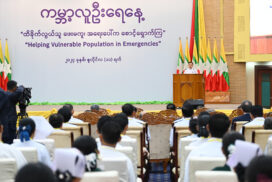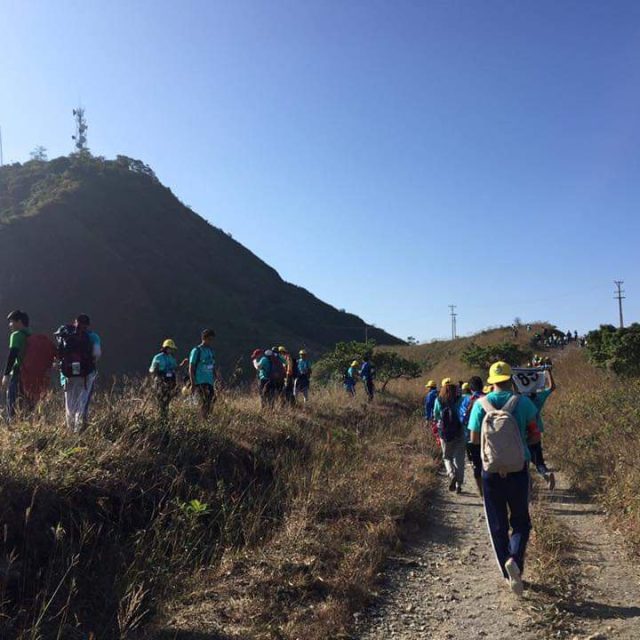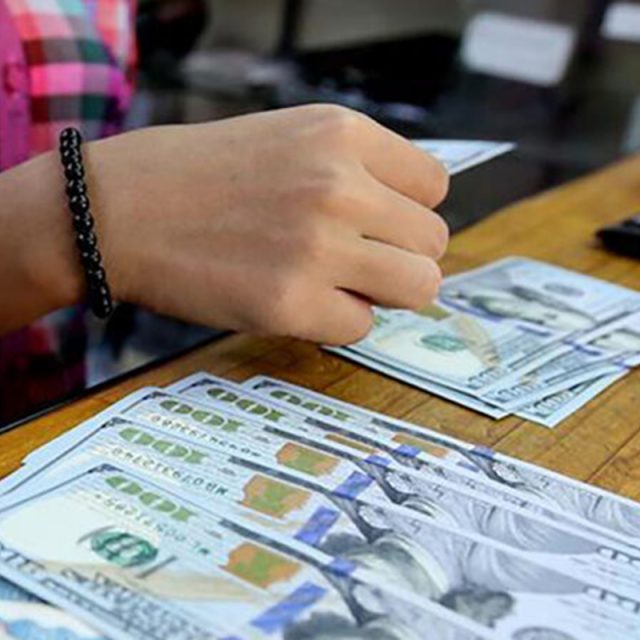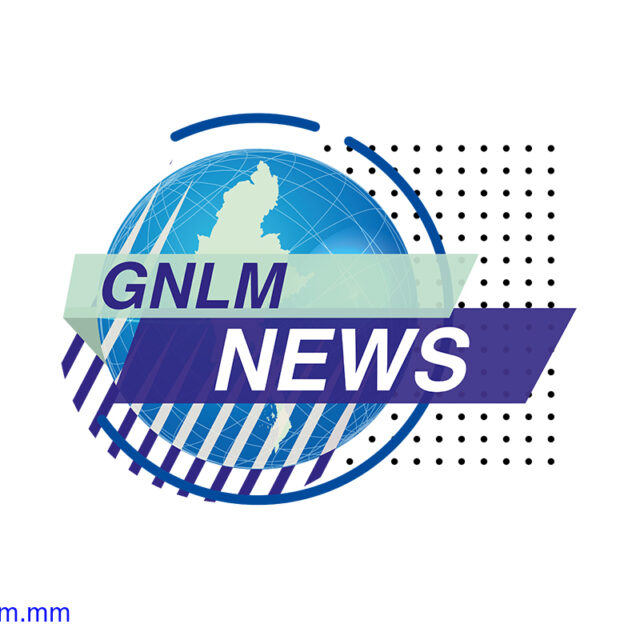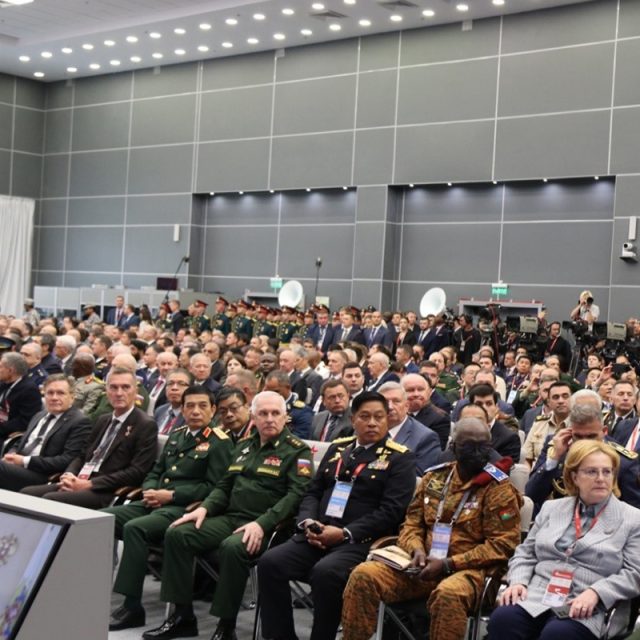Dr Myo Nyunt Aung
Researcher (Archaeology), Bagan
Introduction
According to ancient chronicles such as the Mahavamsa and various archaeological excavations in India and Sri Lanka, the bodily relics of the Buddha, including hair, a tooth, the collarbone, and the larynx, were enshrined in stupas across these regions. Enshrining the relics of the Buddha, the remains of Buddhist saints, and the ashes of heroic kings in Buddhist stupas serves the purpose of worship and the veneration of the religious ideals embodied by these figures.
In Thailand, Buddhist stupas have historically been expanded over time by encasing older stupas within new shells. Secondary donors in Thailand often choose to encase stupas to protect their inner stupas, which enshrine valuables such as large golden Buddha images, jewellery, gold artefacts, and amulets.
In Myanmar, relics of the Buddha, such as the tooth relic duplicate gifted by the King of Sri Lanka, the collarbone, and the frontlet relic, are enshrined in Buddhist stupas. Additionally, the ashes of Buddhist saints, like the monk Shin Arahan in Bagan, as well as the ashes of renowned kings and queens from Srikshetra, are similarly enshrined. These practices are undertaken to worship and venerate the stupas for religious purposes (Aung Thaw, Myint Aung, Sein Maung Oo, and Than Swe, 1993).
Religious Idea in India
A brick stupa, possibly built in pre-Asokan times, is located at Piprahwa in the Siddharthnagar district of Uttar Pradesh, India. This stupa, constructed from large bricks, measures 35 metres in diameter and stands at an extant height of 6.6 metres. Among its relics, a gold relief figure of the mother goddess in a frontal pose, a crystal casket (see Figure 1), an inscribed steatite casket, and a vase with inscriptions believed to date back to pre-Asokan times were recovered. According to the inscriptions on the relic casket, these relics are associated with Buddha himself (ASI, 1996, p. 88). The inscriptional evidence suggests that in pre-Asokan times, the Buddha’s relics were placed inside an inscribed reliquary enshrined within the stupa for worship and veneration. This provides strong evidence for the religious use of Buddha’s relics. Archaeological evidence from India (Mitra, 1971) indicates that there are other encased stupas, such as those at Sanchi, Satdhara, Bharhut, and the Buddha relic stupa at Vaishali. These stupas enshrine the relics of the Buddha and Buddhist saints, including the Buddha’s chief disciples, inside the inner stupas to facilitate worship and veneration for religious purposes.
There is a Buddha relic stupa located in the Vaishali district of Bihar, India. It is one of the eight original relic stupas built over the corporeal remains of the Buddha. According to Buddhist traditions, after the Buddha’s demise, his body was cremated by the Mallas of Kushinagar with a royal ceremony befitting a universal king, and the mortal remains were distributed among eight claimants, including the Lichchhavis of Vaishali. Originally, this stupa was a small mud structure measuring 8.07 metres in diameter, built in the 5th century BCE. It was subsequently encased with bricks and enlarged four times, increasing its diameter to 12 metres during the Maurya, Sunga, and Kushan periods (Mitra, 1971). The Ayaka projections noticed towards the south and east possibly provide the earliest example of Ayakapattas. The most remarkable discovery in this stupa is the soapstone relic casket, partly filled with ashy earth, along with a small conch, two glass beads, a fragmentary piece of gold leaf, and a copper punch-marked coin. The discoveries of the Buddha’s relic stupa, along with the associated wares, provide concrete archaeological evidence of worship and religious ideas regarding traditional customs.
Archaeological excavations in India have uncovered various relic caskets, such as a large round stone box with a green marble relic casket inside, recovered from the Dharmarajika stupa at Sarnath. Other finds include a copper relic casket from the Nandangarh stupa, a soapstone relic casket from a stupa at Vaishali, and gold, crystal, and ivory relic caskets from the Amaravati stupa (Mitra, 1971). These relic caskets are made of different materials, each diminishing in size to the innermost layer. The relics of the Buddha found in India were also enshrined in stupas. To protect and preserve them from natural disasters and vandalism, these relics were placed in reliquaries composed of multiple layers. According to archaeological excavations in India, these reliquaries are often found at the centre and bottom of stupas to secure the Buddha’s relics. The placement and enshrinement of the Buddha’s relics inside multiple layers of reliquaries within Buddhist stupas in India were done to facilitate worship and express religious devotion.
Religious Idea in Sri Lanka
Archaeological evidence from Sri Lanka (Ministry of Cultural Affairs, 1981; Ministry of Cultural Affairs, 1982) describes several encased stupas, including Mahiyangana, Thuparama, Dekkhina, Mirisawetiya, Ruwanweli, and Vatadage in Polonnaruva. The Mahiyangana stupa enshrines the hair and larynx relics of the Buddha, while the Thuparama stupa contains the Buddha’s right collarbone. The ashes of King Duthagamani are housed in the Dekkhina stupa, and the relics of the Buddha are enshrined in the Mirisawetiya, Ruwanweli, and Vatadage stupas. These relics are preserved in the stupas for religious purposes. Some relic caskets (see Figure 2) have been found in Ruwanweli Dagaba, Anuradhapura, Sri Lanka (Fernando, 1965). The relics of the Buddha may have been placed inside multiple layers of relic caskets made from various substances to ensure their security and protection, reflecting religious objectives. According to archaeological excavations in Sri Lanka, the relics of the Buddha with their reliquaries have mostly been discovered at the centre of stupas, on the floors or platforms, possibly as consecrated deposits. These relic caskets, unearthed in Sri Lanka, also diminish in size toward the innermost layer. It can be assumed that the multiple layers of the reliquaries are similar to the concept of encasements.
Religious Idea in Thailand
The relics of the Buddha are also enshrined in stupas at significant temples throughout Thailand for religious veneration. Archaeological excavations have uncovered Buddha relics from nine major sites spanning the Dvaravati, Sukhothai, Lanna, Ayutthaya, and Rattanakosin periods. Some of these relics are now housed in the Ratchaburi National Museum, the Ramkhamhaeng National Museum, the Chiang Mai National Museum, the Chao Sam Phraya National Museum, and the National Museum in Bangkok (Svasti, 2016). In Thailand, the Buddha’s relics are often placed in the inner chambers of stupas, along with miniature statues of the Buddha, votive tablets, and sometimes gold and silver amulets, which are added during the stupa’s construction. Additionally, the ashes of kings, royal families, and devout Thais are enshrined in smaller stupas within temple compounds. In Thailand, the secondary donors mostly enlarged to protect the inner stupas, which enshrined valuables such as large golden Buddha images, pieces of jewellery, golden materials, and amulets so that due to encasement, the treasure seekers and thieves cannot loot them (Byrne 1995, pp. 266-279). This practice provides strong archaeological evidence of encasement for religious purposes aimed at safeguarding the Buddha’s relics. Reliquary-type stupas (see Figure 3) used for religious purposes have also been found at the Eastern Stupa, Wat Phra Si Sanphet, in Ayutthaya.
Religious Idea in Myanmar
The Manuha stone inscription notes that in 1067 CE, King Manuha constructed a small stupa known as the Mahtaw or Moathtaw stupa, which enshrined the Buddha’s relics. To protect these relics, he encased the stupa with three large seated Buddha images and one recumbent Buddha image. These images were completed within six months and six days after King Manuha sold his ring to a wealthy man from Myinkaba (Nyein Maung, 1972, Vol-1, pp. 322-323). Inscriptional evidence suggests that King Manuha built the Mahtaw stupa specifically for the worship of the Buddha’s relics. The Shwe Kon Cha temple stone inscription, dating to 1141 CE (Nyein Maung, 1972, Vol-1, pp. 143-151), indicates that Buddha’s relics were placed inside two golden Patho (miniature stupas) and other Patho made from various substances along with three golden umbrellas and nine white umbrellas within the reliquary. This inscription reveals that the relics were enshrined with miniature stupas for religious worship. The Anantathuya Couple stone inscription, dated 1223 CE (Nyein Maung, 1972, Vol-1, pp. 151-163), describes the relics of the Buddha being placed inside eight layers of reliquaries made from different materials at the Lemyethna temple in Minnanthu village, Bagan. Similarly, the Thaman Star stone inscription, dated 1343 CE (Nyein Maung, 1983, Vol-4, pp. 50-54), mentions that the relics of the Buddha, belonging to both the monk Maha Upalawun and Thaman Star, were encased in three layers of reliquaries: a golden relic casket, a silver casket, and a small stone stupa with a golden umbrella, enshrined at the Thaman Star temple. These inscriptions collectively document the traditional custom of placing and enshrining Buddha’s relics in reliquaries for worship and veneration according to religious ideals.
There are four tooth relic stupas in the Bagan region: Shwezigon, Tantkyi Hill, Lokananda, and Turintaung, all built by King Anawrahta in the 11th century CE. Among these, the Shwezigon and Tant Kyi Taung stupas are notable as encased stupas. The tooth relics of the Buddha, presented by the King of Sri Lanka, are enshrined in these stupas. According to tradition, the collarbone and frontlet relic of the Buddha were also enshrined in the Shwezigon stupa in 1059 CE (Aung Kyaing, 2002). The purpose of enshrining these relics in encased stupas was to facilitate worship and veneration for religious practice and the preservation of the religion. After the earthquake in 1975, reliquaries (see Figure 4) made of various substances such as gold, silver, bronze, and sandstone were discovered at the Lokananda stupa (Aung Kyaing, 1992) and the Mahabodhi temple at Bagan. These discoveries provide strong archaeological evidence of the concept of encasement for religious purposes dating back to the Bagan period. It is assumed that these reliquaries were used to place and enshrine the Buddha’s relics for religious purposes during the Bagan period. According to legend, a number of Moathtaw stupas may have been built by King Asoka in Myanmar (Bo-Kay, 1981, pp. 220-222), with relics of the Buddha enshrined in each during his reign for worship and religious devotion.
The history of the Shwedagon stupa in Myanmar also records the discovery of relics associated with the three preceding Buddhas, namely the staff, water-dipper, and lower garment, during excavations at the site. These relics, along with the eight sacred hairs of the Gotama Buddha brought by the brothers Taphussa and Bhallika from Okkala (Yangon), were re-enshrined in the Shwedagon stupa (Aung Thaw, 1972). The Shwedagon stupa is one of Myanmar’s encased stupas, and successive Myanmar kings and donors have ritually re-enshrined these relics multiple times for the purposes of worship and veneration.
Conclusion
Archaeological evidence across various regions highlights the practice of encasing stupas to enshrine the relics of the Buddha and other significant Buddhist figures. In India, encased stupas such as those at Sanchi, Satdhara, Bharhut, and the Buddha’s relic stupa at Vaishali reveal that relics of the Buddha and his chief disciples were placed inside inner stupas for religious worship and veneration.
In Sri Lanka, encased stupas like Mahiyangana, Thuparama, Dekkhina, Mirisawetiya, and Ruwanweli feature relics of the Buddha, including the hair and larynx relics in Mahiyangana, the right collarbone in
Thuparama, and the ashes of King Duthagamani in Dekkhina. These stupas were built to preserve and honour the Buddha’s relics for religious purposes.
Thailand also reflects this tradition, where the Buddha’s relics are enshrined in inner chambers of stupas along with miniature Buddha statues, votive tablets, and sometimes gold and silver amulets. Ashes of kings, royal families, and devout Thais are also enshrined in smaller stupas within temple compounds. Over time, older stupas are encased in new shells, with secondary donors protecting inner stupas containing valuables to prevent theft. This practice provides strong archaeological evidence of encasement to protect the relics of the Buddha.
Excavations in India and Sri Lanka have uncovered various relic caskets made from materials like stone, copper, soapstone, and gold, often diminishing in size to the innermost layer. The relics of the Buddha found in these regions, as well as in Thailand and Myanmar, were enshrined in multi-layered reliquaries to safeguard against natural disasters and vandalism. In Myanmar, the legend of Moathtaw stupas suggests that relics were enshrined during King Asoka’s reign to support religious practices. These customs across different cultures underscore the importance of encasing and preserving Buddha’s relics for worship and veneration.
References
ASI. (1996). Archaeological Remains, Monuments and Museums, Part 1 & Part 2,
Director General of Archaeological Survey of India, New Delhi.
Aung Kyaing (Minbu), U. (1992). Lokananda Phaya tha maing hnit thihmut phwai yar ah phyar phyar [History of Lokananda Stupa and other remarkable records]. Thudhamawady Press, Yangon.
Aung Kyaing (Minbu), U. (2002). Myat Phaya Shwezigon let yar sone [The Artistic Works of Shwezigon Stupa]. Sarpay Beikman Press, Yangon.
Aung Thaw, U. (1972). Historical Sites in Burma. Archaeology Department, Ministry of Culture, Yangon.
Aung Thaw, U, Myint Aung, Sein Maung Oo and Than Swe. (1993). Shae haung Myanmar myo daw mya [Ancient Myanmar Cities]. Yangon: Ministry of Information.
Bo Kay, U. (1981). Bagan thu te tha na lan nyun [Guide to Bagan Research]. Sarpay Beikman Press, Yangon.
Byrne, Denis. (1995). Buddhist Stupa and Thai Social Practice, World Archaeology, Vol 27, No 2, P 266-281, Buddhist Archaeology, Taylor Francis, Ltd.
Fernando, WB Marcus. (1965). Ancient City of Anuradhapura, The archaeological Department, Government Press, Ceylon.
Geiger, Wilhelm. (1912). The Mahavamsa or The Great Chronicle of Ceylon, Oxford University Press, Amen Corner, EC.
Ministry of Cultural Affairs. (1981). A Guide to Anuradhapura, Central Cultural Fund, Colombo, Sri Lanka.
Ministry of Cultural Affairs. (1982). A Guide to Polonnaruva, Central Cultural Fund, Colombo, Sri Lanka.
Mitra, Debala. (1971). Buddhist Monuments. Shishu Sahityu Samsad Pvt Ld, The India Press Pvt Ld, Calcutta.
Nyein Maung, U. (1972). Shae haung Myanmar kyauk sar myar (Atwe-tit) [Ancient Myanmar Stone Inscriptions (Volume-1)], Yangon: Department of Archaeology.
Svasti, Pichaya (2016, August 2). Bangkok Post: A gathering of treasures. A new exhibition collects several sets of the Lord Buddha’s relics from various national museums under one roof. Retrieved from https://www.bangkok.com








